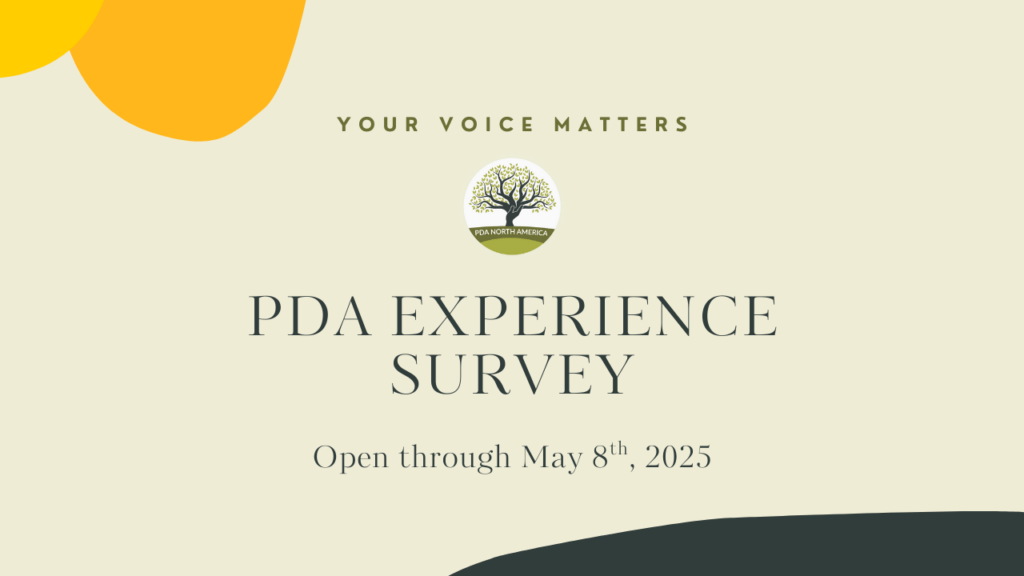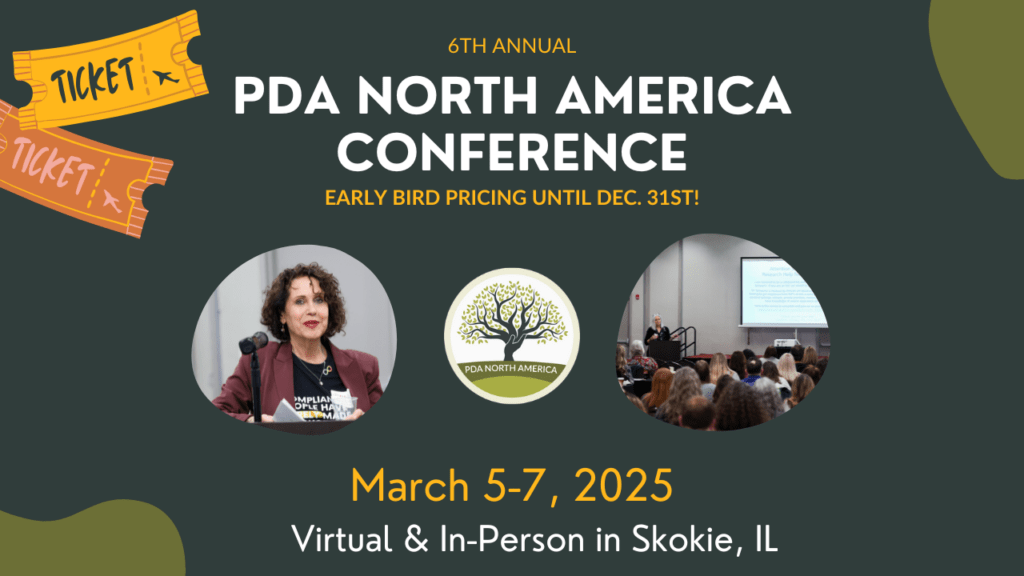Sleep issues are often talked about in PDA forums, with exhausted parents and carers desperate for their PDA kids to sleep through the night. Current folk wisdom is to restrict screen use and feed kids melatonin, both of which may be counter-productive.
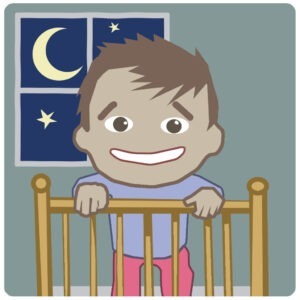
Most people will know about me because of my PDA, but I’m blessed with another invisible difference that makes me appear selfish and lazy: Delayed Sleep Phase Syndrome (DSPS), which forces me to be awake all night and sleep through the day. My sleep phase has been severely delayed since I was a small child. I’ll talk more about DSPS later in this article, but start off with a summary of other sleep issues associated with PDA, and look at what may help.
Much of the first part of this article is taken from PDA Society’s 2021 booklet on sleep, produced in association with The Sleep Charity and Sally Cat: https://www.pdasociety.org.uk/wp-content/uploads/2022/06/PDA-Sleep-1.pdf
PDA Society’s 2021 sleep survey
A survey conducted by PDA Society in November 2021 revealed that sleep is a significant issue for many PDA children and adults. Out of 569 responses, 85% reported sleep difficulties, with common struggles related to getting to bed, falling asleep, staying asleep, and waking up in the morning. Notably, 60% of respondents said sleep had been problematic from birth, and for 17%, it worsened during puberty.
Many PDA individuals experience fear of sleep, with factors such as anxiety, loss of control during sleep, and worries about the next day contributing to bedtime distress. Common issues also included difficulty “switching off” mentally, nightmares, vivid dreams, and the need for physical contact or co-sleeping. Professional advice and conventional sleep hygiene practices were generally unhelpful for most, with only 8% finding them effective.
The survey identified key challenges, such as a lack of a gradual buildup to tiredness, high anxiety, and the feeling that going to bed or following sleep-related demands is overwhelming. Some respondents also reported circadian rhythm differences, with irregular bedtimes or sleep patterns.
In terms of solutions, the most helpful strategies included flexibility, creating personalized routines, co-sleeping, and avoiding strict sleep hygiene recommendations. Approaches like dimming lights subtly or using indirect cues for bedtime, along with focusing on comfort (e.g., sensory adaptations, pets, or the freedom to choose where to sleep), proved beneficial. For many, reducing anxiety around bedtime and trusting that sleep would come naturally was key.
Medication, such as melatonin, helped some respondents, although its effectiveness varied. Overall, autonomy and control over bedtime routines, as well as trial-and-error approaches tailored to individual needs, emerged as crucial factors in managing sleep issues for people with PDA.
Tailoring Strategies to Individual Needs
PDA children and adults face unique challenges when it comes to sleep. While general sleep advice—such as maintaining a consistent bedtime routine—works for many, these strategies can be counterproductive for PDA people. The results of the PDA Society’s 2021 survey highlight how traditional sleep interventions may not always suit PDA individuals, and this insight is also reflected in the experience of sleep professionals trained by The Sleep Charity.
One of the key issues is that typical sleep recommendations, which often involve consistent routines and behavior modifications, can be too demand-heavy for PDA people. For example, while waking at the same time every morning is generally advised, it may trigger demand avoidance in PDA people or worsen circadian rhythm disruptions. Therefore, a more flexible, bespoke approach is crucial, involving everyone—PDA individuals, families, caregivers, and professionals—in collaboration.
It’s important to recognize that the goal is not to force adherence to standard sleep strategies but to focus on what works for the individual. This may mean experimenting with different techniques and allowing for flexibility in how and when sleep is achieved. As The Sleep Charity suggests, it’s fine to “do whatever works” to promote sufficient rest. While some unconventional methods may seem unusual, the priority is always ensuring enough sleep, even if that requires deviating from traditional sleep guidelines.
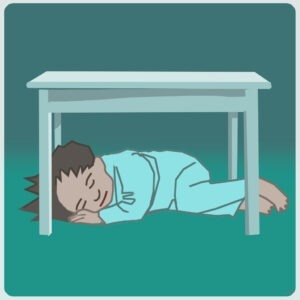
In addition to flexibility, addressing sleep difficulties requires patience. Tackling these issues can be challenging, and progress may sometimes involve a temporary worsening of sleep patterns before improvement. Families and professionals should consider whether the timing is right for addressing sleep challenges, as certain periods (e.g., during less stressful times or specific seasons) may be more conducive to intervention.
Understanding the underlying factors contributing to sleep difficulties is essential. For example, sensory sensitivities, emotional regulation challenges, or circadian rhythm irregularities may all play a role in sleep disruptions. Strategies like using relaxation techniques, offering choices around sleep (e.g., what to wear or where to sleep), and adopting distress tolerance methods can help manage these challenges and create an environment where sleep can occur more naturally.
Reducing the demands around bedtime is also crucial for PDA people. Simple, indirect communication—such as saying “your pyjamas are on the bed” or sending a yawning emoji—can help signal bedtime without triggering resistance. Additionally, thinking about sleep in the context of the entire day, rather than as a separate issue, can be beneficial. This might include managing sensory inputs throughout the day and addressing broader factors like mental health and the home environment, as these can all influence sleep.
In some cases, it’s necessary to accept that sleep difficulties, especially those caused by the circadian rhythm, may persist, and finding ways to work around them can lead to better outcomes. As one survey respondent shared, allowing a PDA child to sleep according to their natural rhythms can improve their mood and reduce demand avoidance.
Finally, coping with sleep issues can feel isolating, so it’s important to build a supportive network, whether through family, professionals, or online communities. This support can provide valuable guidance and emotional relief while navigating the complexities of sleep for PDA people.
Circadian Sleep Disorders and PDA, DSPS, and Non-24
Around 10% of respondents to the PDA Society survey reported experiencing a circadian sleep disorder, such as Delayed Sleep Phase Syndrome (DSPS), Advanced Sleep Phase Syndrome (ASPS), or Non-24.
As no book had been written about circadian sleep disorders, I wrote one myself, Sleep Misfits, with technical input from James Fadden, who is Vice President of the Circadian Sleep Disorders Network and has a biochemistry degree with high honors from Harvard, including neurology classes at the medical school.
The book was published in April 2022: https://www.pdasociety.org.uk/wp-content/uploads/2022/06/PDA-Sleep-1.pdf (with all royalties donated to the PDA Society).
Circadian Impact explores DSPS and non-24 through the words of those who experience them. The aim of the book is to tackle the prejudice towards people whose body clocks prevent them from waking and sleeping at socially-approved hours by increasing empathy. It also serves as a manual for those whose sleep is impacted by their circadian rhythm.
Although the term “disorder” is disliked by some autistic advocates, the majority of DSPS and Non-24 people consider their condition to be a disorder.
The body’s circadian rhythm regulates the sleep-wake cycle. With DSPS, this rhythm is delayed, causing people to sleep and wake much later than societal expectations—sometimes after than midday. ASPS is the opposite, where the sleep-wake cycle is much earlier than typical. Non-24 causes a person’s cycle to be longer than 24 hours, leading to a progressively delayed sleep-wake pattern.
These sleep disruptions are neurological and frequently co-occur with autism and ADHD.
While ASPS sleep-wake schedules tend to be a applauded in our morning-oriented society, DSPS and Non-24 schedules generate difficulties with work, school, and social commitments.
For many, the impacts are far-reaching: sleep deprivation, extended sleep inertia (a groggy, impaired state after waking), and low demand tolerance during waking hours, all of which can negatively affect mental and physical health.
DSPS people sometimes describe themselves as having “chronic jet lag” or feel disconnected from the expectations of others, facing stigma or loneliness due to their sleep patterns.
Standard sleep hygiene practices only impact co-occurring insomnia, and traditional approaches like chronotherapy (gradually shifting sleep times) can make DSPS switch to Non-24. However, some treatments, such as morning bright light therapy, blue light blocking, and melatonin (in very small doses), have shown success in reducing sleep delay (see next section).
Stopping children using screens at night may reduce insomnia, but won’t fix faulty circadian rhythms. In fact, recent research suggests that blue light doesn’t have the negative effect on sleep that it’s popularly believed to have. On the flip side, refusing to let a PDA kid look at screens after dark is likely to generate demand avoidance against feeling sleepy. And, if the child is left in the dark, without the comfort of a screen, and unable to sleep for hours, depression and anxiety can escalate.
Most importantly, DSPS and Non-24 people often find that adapting their schedule to their natural sleep cycle and requesting accommodations, such as flexible work hours or school schedules, provides the most relief.
Why Microdosing Melatonin Can Be Effective (And Why Larger Doses Can Make Sleep Delays Worse)
Melatonin can be a helpful tool for adjusting sleep-wake cycles, especially for people with circadian rhythm disorders. However, the way it’s used matters greatly. Experts, including James Fadden, Vice President of the Circadian Sleep Disorders Network, explain that microdosing melatonin is often more effective than taking large doses, and here’s why:
Small Doses for Gradual Change: The most effective way to use melatonin is to take a very small dose (between 0.25 to 0.5 mg) several hours before your desired bedtime. Typically, this should be taken 6-8 hours before your current bedtime, with some flexibility in timing. While it might seem like nothing is happening at first, patience is key. Over days or weeks, this small dose can slowly shift your sleep timing, helping your body adjust naturally.
If you’re using timed-release melatonin, it’s recommended to take it even earlier (6+ hours before bedtime). However, cutting timed-release melatonin can cause it to act too quickly, potentially reducing its effectiveness.
The Problems with Larger Doses: In contrast, larger doses (anything above 1 mg is a large dose. 9 mg is very large) are often used right before or at bedtime. While this can have an immediate sedative effect, helping you fall asleep faster, it comes with several significant drawbacks:
- Melatonin is a weak sedative compared to other sleep aids, so large doses may not be as effective as people hope.
- Tolerance builds quickly—as your body adjusts, larger doses are needed to achieve the same effect, which can lead to dependence.
- Rebound waking is common. After initially falling asleep, people may wake up several hours later, unable to get back to sleep.
Even more problematic, larger doses leave melatonin in your system into the next morning. This can cause your sleep-wake cycle to shift later and later, making the sleep delay worse over time. In the long run, using too much melatonin can backfire, leading to delayed sleep rather than fixing it.
Why Less is More: Experts often find that when melatonin stops working at higher doses, reducing the dose can actually help. It may seem counterintuitive, but lower doses can be more effective in resetting the sleep cycle without causing the rebound effects or long-term delays associated with larger doses.
Conclusion: Melatonin is not a one-size-fits-all solution, and it may not work for everyone. If you find that neither small nor large doses are effective, it may be best to stop using it altogether, rather than continually increasing the dose. When used correctly, microdosed melatonin offers a gentler, more sustainable approach to adjusting sleep patterns.
About Sally Cat: Sally Cat is an adult PDA author, peer researcher, illustrator, animator and public speaker. As a visual thinker and trained person-centred counsellor, she communicates the inner experience of the PDA neurotype with creative graphics. Her Facebook page, Sally Cat’s PDA page, has over 43,000 followers, including fellow adult PDAers, parents and professionals.
